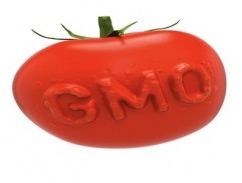 With the defeat of California’s Proposition 37 last November and the recent signing of House Resolution 933, opponents of genetically modified foods are in bad need of a win. And with the state legislative season starting to wind down — 9 of the 50 states have already adjourned for the year—those who want food with GMOs labeled or banned are running out of venues for scoring such a win.
With the defeat of California’s Proposition 37 last November and the recent signing of House Resolution 933, opponents of genetically modified foods are in bad need of a win. And with the state legislative season starting to wind down — 9 of the 50 states have already adjourned for the year—those who want food with GMOs labeled or banned are running out of venues for scoring such a win.If one or more state legislatures don’t come through soon, the side that wants GMOs in food labeled will back to where they were one year ago — trying to persuade a majority of a state’s voters to agree with them. That next initiative battle is being brought is in Washington State in the form of an ballot measure brought through the Legislature, called I-522.
Last year, agricultural, food and chemical industries pumped enough money into the opposition campaign to Prop 37 to produce a narrow defeat for the measure that proponents once claimed was supported in California by a 9-to-1 margin. After that defeat, the GMO opponents were caught off-guard by language inserted into HR 933 that prevents a federal judge from ordering farmers to destroy any GM crop ruled to have not to have been sufficiently vetted by USDA until October 1 of next year.
Opponents dubbed the temporary rules the “Monsanto Protection Act,” for the assistance it might provide to the St. Louis-based agricultural company that helped Missouri’s Republican Sen. Roy Blunt in drafting the language, a tiny part of a 78-page budget bill.
After finding that USDA’s environmental review was not up to his liking, a San Francisco judge did order GM sugar beets pulled out the ground a couple a years ago, but that order was over turned on an appeal that included the Supreme Court. Even in the absence of the rider on HR 933, it appears highly unlikely any federal judge will be ordering any GM crops torn up between now and October 1, 2014.
Nevertheless, President Obama’s signing of the measure was met with howls of anger from GM opponents who suffered their second major loss in a year. An outfit called Centre for Research on Globalization, based in Montreal, called the President “rather soft on GMO policy.”
At the state level, GMO labeling forces are on the hunt. Bills have been introduced in one state after another. Some hearings have been held. But wins have proven elusive. Various states looked favorable going into the legislative season. Hawaii, Florida, Vermont and even Iowa were all tantalizing possibilities that have at this point seemed to fizzle.
Oregon has both a ban on production and importing on GMO salmon and a labeling measure in the works, but Salem’s rules require bills to be out of their committee of origin just one week from today. Maine, where an April 23 public hearing has been scheduled, is another state where hope remains. There may be others.
But the one certainty appears to be that come November, Washington state voters will be asked to decide if they want labels on genetically engineered food. I-522 is somewhat unique. In Washington state, it is known as an initiative to the Legislature, not to the people. If the Legislature does nothing, the measure does go to a public vote. However, lawmakers can send their own version with it and let the people decide between the two.
In legislative testimony in Olympia, rather than arguing that GM food is unsafe, pro-labeling advocates have chosen to point out possible differences in flavor and the need for pre-market safety assessments as reasons why it should be labeled for the public.
One plant pathologist who opposes labeling says “billions of people” have now consumed GM foods with no ill effects.





